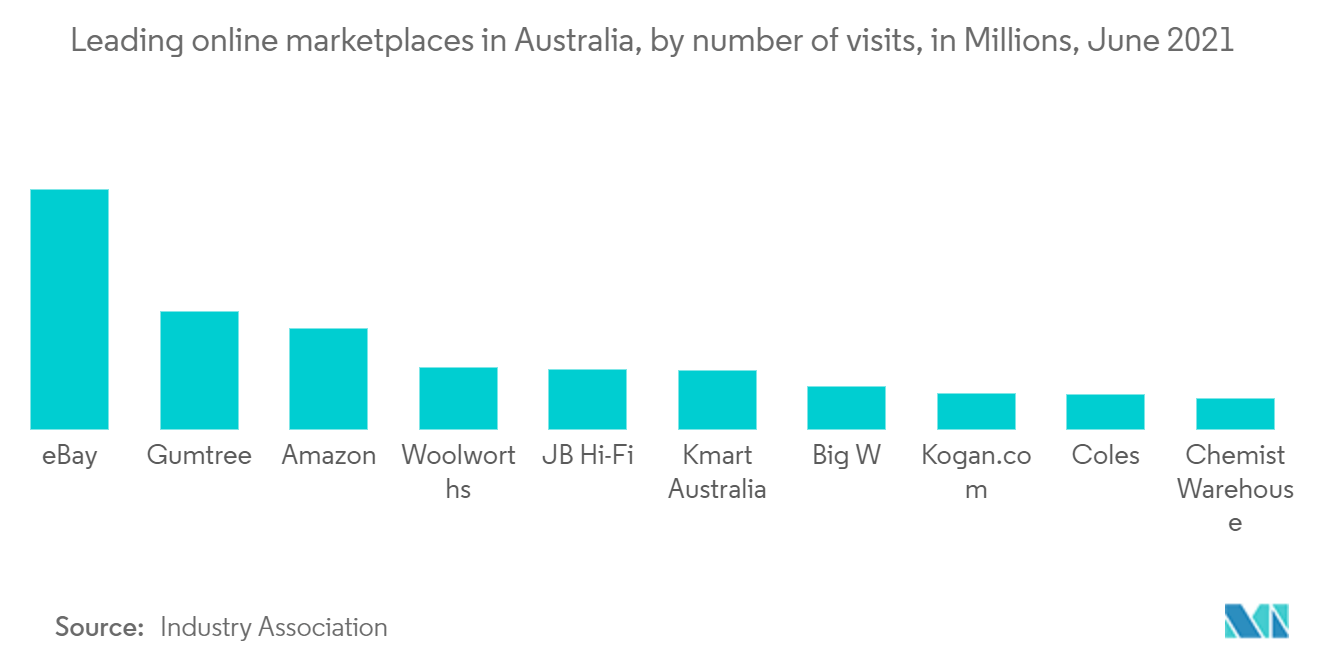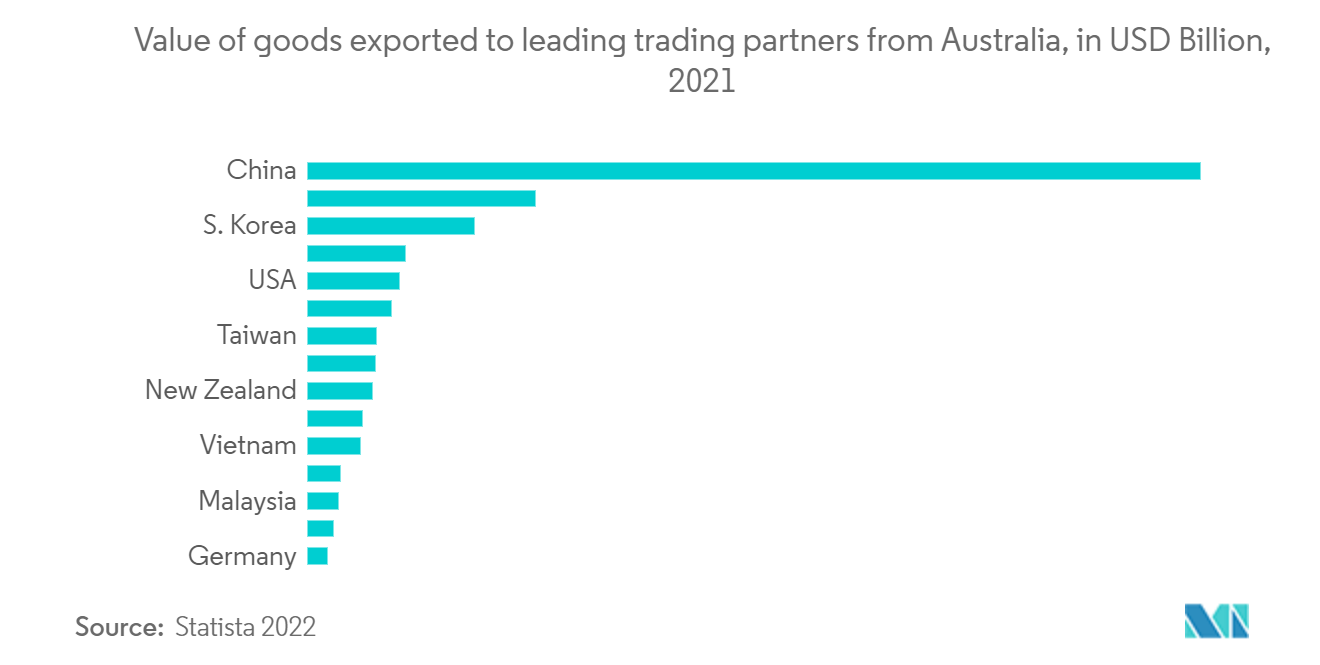Market Trends of Australia Last Mile Delivery Industry
This section covers the major market trends shaping the Australia Last Mile Delivery Market according to our research experts:
Developing e-commerce industry fueling the demand for last mile logistics
The growth in online retail and e-commerce usage has become one of the hottest topics in recent times in Australia. While the pandemic has accelerated the shift to e-commerce by up to five years, expansion in the sector was already well underway. Australia Post 2020 e-commerce Industry Report stated that for March 2020, total retail spending was up by 15.5% YOY and 13.7% in February 2020, with this growth largely driven by bulk purchases in food retail. Over March, online also saw strong growth, accounting for 12.3% of total retail spend, compared to 11.3% in 2019. In April 2020 online purchases grew 6.8%, when compared to the 30 days to 18 Dec 2019.
Grocery retailers looking to fill online orders more efficiently are rolling out new logistics solutions in a bid to ramp up their order volumes in urban areas. Australia is the eleventh largest market for eCommerce with a revenue of USD 31.3 billion in 2021, placing it ahead of Russia and behind of Canada. With an increase of 15%, the Australian e-commerce market contributed to the worldwide growth rate of 15% in 2021.
Online shopping growth for the 2020-21 financial year rose by 31.8% over the previous year, following a similar climb in 2019-20, when sales lifted 33.2%. Pet products, baby products and homewares and appliances led the charge, with online sales for products in that sector growing by 46% year over year. during the first three weeks of the 2021 lockdown in NSW, online shopping increased by 36% over the same period last year.Victoria was the top driver of online sales from July to October of 2020, mirroring the duration of the state's longest lockdown. Over the course of the year, Victorians purchased almost as much as shoppers in NSW from online retailers, despite a smaller population, with 30% of overall spending coming from the state.
The first significant spike in online growth tied to the pandemic was recorded in April 2020, when food and liquor and home and garden purchases more than doubled compared to 2019.Those categories showed above-average annual growth again this year, perhaps hinting at both the necessities Australians were ordering in, as well as the hobbies they'd picked up with more time at home.Overall, 9.1 million households participated in e-commerce between 1 July 2020 and 30 June 2021, which means that roughly 90% of Australians either already shop online or live with someone who does.

Growing cross-border trade relations with other countries on various industries
In August 2020, Singapore and Australia signed the digital economy agreement that will open up economic opportunities for both countries. The Singapore-Australia Digital Economy Agreement (Sadea) builds on Singapore and Australia's strong bilateral trade and investment flows to enhance economic opportunities in the digital realm. The agreement builds on Australia's and Singapore's leading roles in negotiating new international rules on e-commerce in the World Trade Organisation (WTO), to better facilitate the growing volumes of digital trade across the globe. It is the second digital economy pact that Singapore has signed, following the Digital Economy Partnership Agreement with Chile and New Zealand in June 2020.
The Government has invested more than USD 3.5 billion in digital initiatives since 2020. In addition, the Government has invested USD 1.67 billion under the Cyber Security Strategy 2020, USD 4.5 billion for the NBN upgrade plan, USD 1 billion for the JobTrainer Fund and over USD 2 billion in further complementary investments in this Budget for connectivity in regional and remote Australia, improving online safety and building skills.

